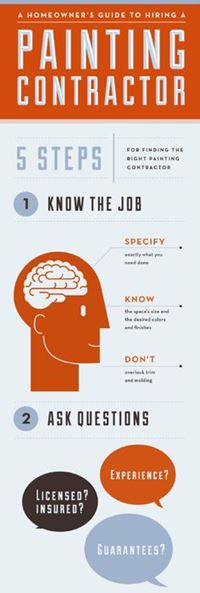Understand Exactly How Seasonal Problems Influence The Success Of Industrial Outside Painting And Find Out The Excellent Durations To Assure Resilient Results For Your Project
Understand Exactly How Seasonal Problems Influence The Success Of Industrial Outside Painting And Find Out The Excellent Durations To Assure Resilient Results For Your Project
Blog Article
Written By-Fox Whalen
When you're intending a business exterior paint task, seasonal variables can make or break your outcomes. You'll want to think about just how temperature and moisture impact paint application and drying out times. Selecting the appropriate period can ensure your paint sticks appropriately and lasts much longer. However which periods are absolutely the most effective for this type of job? Let's explore the key elements that can impact your job's success.
The Influence of Temperature on Paint Application
When you're planning an industrial external paint project, the temperature level can dramatically affect just how well the paint sticks and dries out.
Ideally, you intend to paint when temperature levels range between 50 ° F and 85 ° F. If it's as well cold, the paint might not heal properly, leading to problems like peeling or cracking.
On the flip side, if it's also hot, the paint can dry too promptly, stopping appropriate bond and causing an irregular surface.
You ought to also consider the time of day; morning or late afternoon provides cooler temperatures, which can be a lot more desirable.
Always check the maker's suggestions for the particular paint you're using, as they frequently supply support on the optimal temperature level range for ideal results.
Moisture and Its Result on Drying Times
Temperature level isn't the only environmental factor that influences your business external paint task; humidity plays a considerable duty too. High moisture levels can decrease drying out times substantially, affecting the general quality of your paint job.
When the air is filled with moisture, the paint takes longer to cure, which can result in concerns like poor adhesion and a greater danger of mildew growth. If you're repainting on a particularly moist day, be gotten ready for extended delay times in between coats.
It's crucial to monitor neighborhood climate condition and strategy as necessary. Ideally, aim for moisture levels between 40% and 70% for ideal drying out.
Maintaining these factors in mind ensures your task remains on track and provides a long-term finish.
Best Seasons for Commercial Outside Painting Projects
What's the most effective time of year for your industrial external painting tasks?
Springtime and very early autumn are typically your best options. Throughout these periods, temperature levels are moderate, and moisture levels are frequently reduced, developing perfect conditions for paint application and drying.
Stay clear of summer season's intense heat, which can cause paint to completely dry too quickly, leading to poor bond and finish. Similarly, wintertime's cold temperatures can hinder correct drying and treating, risking the durability of your paint work.
Go for https://www.marthastewart.com/8350975/paint-color-trends-2023 with temperature levels in between 50 ° F and 85 ° F for optimal outcomes. Remember to inspect the neighborhood weather forecast for rainfall, as wet problems can wreck your project.
Planning around house painters indianapolis ensures your painting task runs efficiently and lasts much longer.
Final thought
In conclusion, planning your industrial exterior paint jobs around seasonal factors to consider can make a considerable difference in the outcome. By scheduling work throughout the optimal temperatures and humidity degrees, you'll make certain far better bond and drying out times. Bear in mind to keep an eye on neighborhood weather forecasts and choose the right time of year-- spring and early autumn are your best bets. Taking these actions will certainly help you achieve a resilient and expert finish that lasts.
